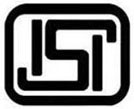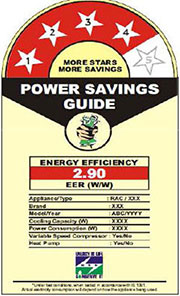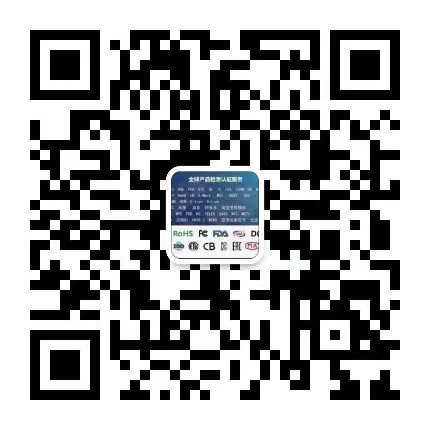
Tel :18138443506
Phone :13798439478
Email :mammon.xu@zhixin-cert.com
Addr :Floor 3, No. 5, Shanglian New Village, Shangcun Community, Gongming Street, Guangming District, Shenzhen (Chuangxin Office Building)
BIS certification
Introduction to Certification
The Bureau of Indian Standards (hereinafter referred to as BIS), in accordance with the provisions of The BIS Act, 1986, the Bureau of Indian Standards (BIS) is the Indian standardization and certification authority, specifically responsible for product certification, and is the certification authority for BIS certification. BIS consists of 5 regional bureaus and 19 sub bureaus. The regional bureau supervises the corresponding branch. Eight laboratories and some independent laboratories under BIS are responsible for the inspection of samples taken during the product certification process. These laboratories are implemented according to ISO/IEC17025.
Since BIS's predecessor, the Indian Standards Institute, started product certification in 1955, it has been 50 years since India's product certification. At present, BIS has issued more than 30000 product certification certificates, covering almost every industrial field such as agricultural products, textiles and electronics.
In principle, the product certification in India adopts the principle of voluntary certification, aiming to provide the final consumers with safe and reliable products with quality assurance. However, considering factors such as public health and safety, national security, infrastructure demand and mass consumption, the Indian government has issued various statutory measures to implement compulsory certification for about 90 specific products, such as milk powder, cement, steel pipes, oil pressure furnaces, multi-purpose dry batteries, medical X-ray diagnostic equipment, plastic milk bottles, bottled mineral water, bottled drinking water, steel and steel products. All products, manufacturers or importers within the scope of compulsory certification products must first apply to BIS for import product certification certificate, and the customs will release the goods according to the certification certificate.
The product certification in India basically follows the principle of voluntary certification, aiming to provide the final consumers with safe and reliable products with quality assurance. BIS product certification is mainly based on ISO Guide28, through the initial inspection and evaluation of the factory quality management system, the supervision of the factory quality management system after certification, and the testing of samples taken from the factory and the market, to determine whether the products are consistent with Indian standards.
Product scope
Products basically covering all industrial fields:
1. Textiles;
2. Chemicals and pesticides
3. Cement and concrete;
4. Metal products and imitation metal products;
5. Mechanical equipment;
6. Electrical, electronic and optical equipment;
7. Auto parts;
8. Agricultural products, food, beverages and tobacco;
9. Leather products;
10. Wood products;
11. Paper and pulp products;
12. Test instruments;
13. Building materials;
14. Pumping, irrigation, drainage and sewage installations.
The mandatory control list for electronic and electrical products is as follows:
Including: electric iron, electric stove, electric heater, switch, incandescent lamp, wire and cable, circuit breaker, AC meter, etc
Application process
1. Application: Zhixin Testing submits an application to BIS.
2. Record: BIS accepts the application, reviews the application documents and materials, and records the application if the procedures are complete.
3. Initial factory inspection: BIS will assign a delegation of no more than 2 officials to the factory for inspection. The applicant shall bear the travel and visa expenses of the official group to the factory for inspection and the corresponding inspection expenses.
4. Testing: The applicant is fostered to BIS designated laboratory for testing.
5. Issuing certificate: if the initial inspection and test results are qualified, and the applicant agrees to implement the BIS approved inspection and test plan and pay the BIS identification fee after certification, the certificate can be issued to the applicant. The certificate is valid for 1 year. After the certificate is granted, the certificate holder shall pay the identification fee and the certificate annual fee every year.
6. Post certification supervision: BIS supervises the quality of its certified products through regular supervision of the holder and surprise inspection and testing of samples in the factory and market. If the samples taken from the factory or the market meet the requirements after regular inspection and independent testing, the certificate can be renewed. The certificate holder applies to BIS for renewal by submitting the specified form, and the renewal fee is INR 500. The holder shall also bear the cost of sample inspection.
Certification mark

Other information
Technical information: voltage frequency AC 230V/400V, 50Hz
Mandatory: mandatory+voluntary
Validity of certificate: 2 years
Factory inspection requirements: first factory inspection+annual inspection, BIS will assign a group of no more than 2 officials to the factory for inspection.
Requirements of the holder: it can be an overseas manufacturer or a local importer in India
BIS mandatory registration
Introduction to Certification
On September 7, 2012, the Ministry of Communications and Information Technology of India (DEIT, Department of Electronics&Information Technology) issued the Decree on Compulsory Registration Requirements for Electronic and Information Technology Products. The decree stipulates that, since July 3, 2013, 15 types of products, including household appliances and information technology products, must be tested and registered in the BIS accredited laboratory according to the specified standards; Only by marking "Self declaration – Conforming to IS..... (relevant Indian Standard)" Registration No. xx... xx on the product itself or on the outer packaging box can we enter the Indian market.
The Bureau of Indian Standards (BIS) is a certification agency, and the qualification laboratories are basically local laboratories in India.
Product scope
It covers 30 categories of products. Among them, 15~30 types of products were officially added by the Ministry of Information Technology of India (DEITY) on November 7, 2014. The effective date of the new products is: the implementation buffer period of the secondary battery/battery pack/mobile power supply (item 20) using alkaline or non acid battery liquid in portable equipment is 9 months, which will come into force on August 7, 2015. The implementation buffer period of the mandatory BIS registration of other products is 6 months from the announcement date, which will come into force on May 7, 2015.
Serial No
Product name
Standard No
Standard name
one
Video game machine
IS 616:2010
Audio, video and similar electronic equipment
All requirements
two
Plasma with screen size of 32 inches and above
/LCD/LED TV
IS 616:2010
Audio, video and similar electronic equipment
All requirements
three
Built in with input power of 200W and above
CD player for loudspeaker
IS 616:2010
Audio, video and similar electronic equipment
All requirements
four
Amplification with input power of 2000W and above
implement
IS 616:2010
Audio, video and similar electronic equipment
All requirements
five
Electronics with input power of 200W and above
Music system
IS 616:2010
Audio, video and similar electronic equipment
All requirements
six
Laptop/laptop/tablet
IS 13252:2010
General requirements for security of information technology equipment
seven
Display with screen size of 32 inches and above
Video monitor
IS 13252:2010
General requirements for security of information technology equipment
eight
Printer and plotter
IS 13252:2010
General requirements for security of information technology equipment
nine
Scanner
IS 13252:2010
General requirements for security of information technology equipment
ten
wireless keyboard
IS 13252:2010
General requirements for security of information technology equipment
eleven
Telephone answering machine
IS 13252:2010
General requirements for security of information technology equipment
twelve
Automatic data processor
IS 13252:2010
General requirements for security of information technology equipment
thirteen
Set top box
IS 13252:2010
General requirements for security of information technology equipment
fourteen
Microwave Oven
IS 302-2-25:1994
Installation of household and similar electronic equipment
Full: Part 2-25: Features of Microwave Oven
Special requirements
fifteen
Electronic clock connected to power grid
IS 302-2-26:1994
Safety of household and similar electronic equipment:
Part 2-26: Special Requirements for Clock
sixteen
IT equipment power adapter
IS 13252 (part-1):2010
Information technology equipment - Safety - General requirements
seventeen
Power supply adaptation of audio and video equipment and similar devices
implement
IS 616:2010
Audio, video and similar electronic equipment - safety
requirement
eighteen
Uninterruptible power supply/inverter ≤ 5kVA
IS 16242 (part-1):2014
General and safety requirements for uninterruptible power supply
nineteen
LED module DC/AC control unit
IS 15885 (part 2/section
13):2012
Lamp controlgear -- Part 2-13: LED modules
DC or AC electronic control unit for block
Special requirements for
twenty
Alkaline or non acid used in portable equipment
Secondary battery of battery liquid/battery pack/mobile
IS 16046:2012
Containing alkaline or other non acidic electrolyte
Batteries and battery packs - portable seals
Power Supply
Safety requirements for storage battery and battery pack
twenty-one
Self ballasted LED lamps for general lighting
IS 16102 (Part 1):2012
Self ballasted LED lamps for general lighting - Safety
requirement
twenty-two
Fixed LED lamps for general lighting
IS 10322 (part 5/Sec
1):2012
Luminaires - Part 5-1: General purpose luminaires
twenty-three
Mobile phone
IS 13252 (part-1):2010
Information technology equipment - Safety - General requirements
twenty-four
Cash register
IS 13252 (part-1):2010
Information technology equipment - Safety - General requirements
twenty-five
POS terminal
IS 13252 (part-1):2010
Information technology equipment - Safety - General requirements
twenty-six
Copier
IS 13252 (part-1):2010
Information technology equipment - Safety - General requirements
twenty-seven
Smart card reader
IS 13252 (part-1):2010
Information technology equipment - Safety - General requirements
twenty-eight
Mail processor/postage machine/postage stamp machine
IS 13252 (part-1):2010
Information technology equipment - Safety - General requirements
twenty-nine
Pass reader
IS 13252 (part-1):2010
Information technology equipment - Safety - General requirements
thirty
Mobile power supply for portable devices
IS 13252 (part-1):2010
Information technology equipment - Safety - General requirements
Application process
1. The customer submits the documents and samples to Zhixin for testing, and submits them to the qualified laboratory in India
2. The laboratory conducts tests and issues test reports
3. Online registration by importers or agents
4. Mark after registration
Marking requirements
No sign. The following words must be printed on the label or minimum package of the product:
“Self declaration –Conforming to IS….. (relevant Indian Standard)”Registration No. xx…xx 。
be careful
1) The declaration shall take precedence over the product. If the size limit cannot be marked on the product, the statement can also be marked on the package.
2) DeitY did not specify the location of the self declaration label, but according to the standard requirements, the declaration label should be clearly visible, readable and indelible on the product
Other information
Technical information: voltage frequency AC 230V/400V, 50Hz
Mandatory: mandatory
Validity of certificate: 1 year
Factory inspection requirements: None
Licensee requirements: the factory must have a license, and the factory needs to have a branch office in India or an authorized representative to be the applicant for registration. The application for registration can only be submitted by the importer or local agent.
WPC Certification in India
Introduction to Certification
Wireless Planning&Coordination Wing (WPC) of India is the agency that regulates wireless regulations in India. All wireless products must be approved by WPC before entering the market. India's frequency bands are divided into two categories: free and not yet open. For free open frequency bands, such devices only need to apply for ETA (equipment type approval) certificates; For other bands that are not free of charge, you need to apply for a license. Both the ETA and the license holder must be a locally registered company. Based on CE R&TTE or FCC ID (local Indian standard), 2G/3G/4G requires mobile operators to apply.
Product scope
All wireless devices that can work in the approved frequency band. The following frequency bands are free:
1.2.40 to 2.4835 GHz
2.5.15 to 5.350 GHz
3.5.725 to 5.825 GHz
4.5.825 to 5.875 GHz
5.402 to 405 MHz
6.865 to 867 MHz
7.26.957 – 27.283 MHz
8.335 MHz for remote control of crane
9.20 to 200 KHz.
10.13.56 MHz
11.433 to 434 MHz
Application process
1. The customer prepares samples and materials and applies to submit them to Zhixin Testing
2. If the customer has no CE R&TTE, Sincere Testing will conduct the test and issue a test report after the test is completed
3. Sincere Testing submits CE R&TTE report and relevant documents to WPC
4. Issue ETA certificate when there is no problem with WPC parts
Label requirements
No sign, certificate number can be printed
Other information
Technical information: voltage frequency AC 230V/400V, 50Hz
Mandatory: mandatory
Validity of certificate: 3 years
Factory inspection requirements: None
Requirements of the holder: local agency is required
Introduction to Certification
In May 2006, according to India's Energy Conservation Act (2001), the Ministry of Energy of India established the Bureau of Energy Efficiency (BEE) as the owner of the energy efficiency labeling plan, which is responsible for the development, formulation and implementation of India's energy labeling plan.
The purpose of this plan is to provide energy efficiency performance information and help consumers choose commodities. It was officially implemented on May 18, 2006. The first products to implement this plan are frost free refrigerators and tubular fluorescent lamps. At present, the product categories involved have expanded to 19 categories: frost free refrigerators, tubular fluorescent lamps, indoor air conditioners, distribution transformers, indoor air conditioners (embedded, floor mounted, ceiling mounted, wall mounted), direct cooling refrigerators, induction motors, agricultural pumps, ceiling fans, electric water heaters, color televisions, washing machines, computers (laptops/laptops), liquefied petroleum gas furnaces and ballasts.
The Energy Efficiency Labeling Program was originally a voluntary program. Later, according to a series of energy efficiency laws and regulations issued by India (see India's Energy Efficiency Laws and Regulations column of this topic for a detailed list of laws and regulations), since July 2010, tubular fluorescent lamps, indoor air conditioners, power distribution transformers and frost free refrigerators must be subject to mandatory energy efficiency labeling plans. Products without energy efficiency labels must not be sold in the Indian market. For other products, the energy efficiency labeling program remains voluntary.
The test needs to be completed in a qualified laboratory in India, and the local agent in India needs to apply for energy efficiency registration on BEE's official website.
Product scope
Compulsory certification products:
1. Frost Free (No Frost) Refrigerator
2. Tubular Fluorescent Lamps
3. Room Air Conditioners
4. Distribution Transformer
Voluntary certification products:
1. Room Air Conditioners (Cassette, Floor Standing Tower, Ceiling, Corner AC)
2. Direct Cool Refrigerator
3. Induction Motors
4. Agricultural Pump Sets
5. Ceiling Fans
6. Domestic Liquefied Petroleum Gas (LPG) Stoves
7. Electric Geysers
8. Color TV
9. Washing Machine
10. Computer (Notebook/Laptops)
11. Ballast (Electronic/Magnetic) ballast
12. Office equipment's (Printer, Copier, Scanner, MFD's)
13. Diesel Engine Driven Monoset Pumps for Agricultural Purposes
14. Solid State Inverter
15. Diesel Generator
Application process
1. The customer prepares samples and submits them to Sincere Testing
2. Sincerely send samples to qualified laboratories for testing and issue test reports
3. After the test, register energy efficiency on BEE's official website
4. The registration is approved, the energy efficiency certificate is issued, and the applicant applies for purchasing labels
5. After the energy efficiency label is affixed, it can be sold in the market
Label requirements
India's electrical energy efficiency label belongs to the comparison label, which is mainly composed of three parts. The first part is to indicate the energy efficiency level of the product through five five pointed stars. The level of the product belongs to, and the corresponding level is expressed in reverse. The higher the level, the more energy saving the product; In the second part, the product's energy consumption indicators (such as annual power consumption or energy efficiency ratio) are accurately indicated with figures, and the product name, trademark name, product model name, main operating parameters and energy consumption indicators of the equipment, and relevant IS standard numbers that meet the minimum energy efficiency requirements are listed on the right or below them; The third part is the blue-green logo of the Indian Energy Efficiency Agency. Some labels shall also indicate the label grant number.
The energy efficiency labels of different products are slightly different. The energy efficiency labels of air conditioners are as follows:

The energy efficiency label of TV is as follows:

The energy efficiency labels of tubular fluorescent lamps are as follows:

Other information
Technical information: voltage frequency AC 230V/400V, 50Hz
Mandatory: mandatory
Certificate validity: no validity
Factory inspection requirements: None
Requirements of the holder: local agency is required


Service Hotline
18138443506
13798439478